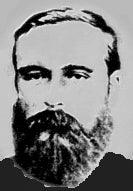
Understanding Scottish Tea
Share
With images like Braveheart, Loch Ness, bagpipes and kilts, Scotland occupies a mythic place in the minds of many. But few realize the importance Scotland played in making tea so popular.
Scotland's relationship with tea started in the early 1600s, when it was formally introduced to the country. Later, many Scots went to India and Ceylon (now Sri Lanka) to start and run tea estates. Scotsman James Taylor is known as the father of Ceylon tea.

Scots helped make tea a global drink. Lipton, one of the most recognizable brands, started in Scotland. Thomas Lipton opened his first grocery shop in Glasgow, Scotland, in 1871. After growing his grocery business to over 300 stores, he entered the tea business. Buying directly from growers and even starting an estate himself, Lipton became the first to sell tea to the public at low prices. He was one of the first to create a specific brand of tea that would be the same everywhere it was sold. In the 1890s, Lipton expanded his brand to America.
Although the most popular type of tea is English Breakfast, it was actually created in Scotland. According to legend, it was invented in Edinburgh, Scotland, by a Scottish tea master. Queen Victoria, fond of all things Scottish, popularized the blend in England. It eventually became known as breakfast tea. Over the years, companies across the world have copied this tea.
Today, two types of Scottish tea predominate: Scottish Breakfast and tea blended specifically for Scotland's soft water. Scottish Breakfast, made by companies around the world, is a full-bodied black tea with a malty flavor best served with sugar and milk.

Real

Today, Brodies still produces tea in Scotland. Available in distinctive drums,
Each Scottish tea has a unique taste. To determine what you prefer, first take a sip of the tea without milk or sugar. Then, you will discover the real flavor of each tea. You may discover you really prefer one type of tea over another. Then, you can add milk or sugar.
